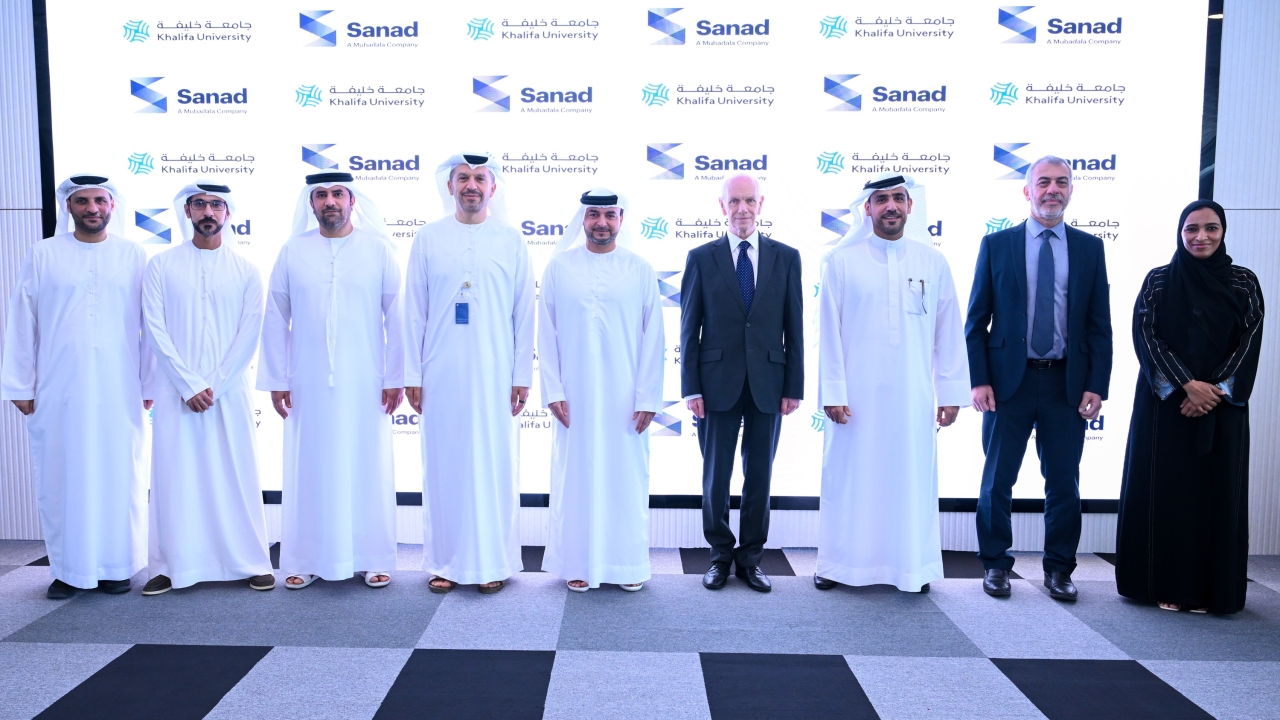Academy that's in A Class of its own
Emirates officially opened its brand new flight-training academy at Dubai South during the Dubai Air Show. Dave Calderwood was there.

Emirates Flight Training Academy (EFTA) will offer training for both UAE cadet pilots and others from around the world.
It’s taken 10 years since the idea for the academy was first mooted and five years since given the go-ahead was given, but what an astonishingly brilliant facility it has turned out to be.
The state-of-the-art training organisation breaks new ground with cadets learning to fly on the very latest glass cockpit Cirrus SR22 G6 single-engine piston aircraft, then transitioning straight to jet flying on the Embraer Phenom 100EV, again the latest model.
It also caters for both male and female cadets, something that’s only just happened in the male-orientated world of aviation.
Landside building of the EFTA was completed in mid-2017 and the first batch of cadets, who are on the Emirates UAE national cadet pilot programme, is well on its way through training.
As well as training for an airline transport pilot’s licence (ATPL), EFTA offers foundation courses including English language. The standard ATPL course is 21 months long but can extend up to 43 months, including foundation courses.
Abdulla Al Hammadi is vice-president of EFTA, a former Emirates Boeing 777 captain, and also worked on Emirates’ national cadet pilot programme, which led up to EFTA.
“The academy is spread over 164,000sqft, equivalent to an area the size of 200 football fields,” he said.
“The facility includes 36 ground school classrooms, ground-based simulators, a young and modern training aircraft fleet with 22 Cirrus SR22 G6 and five Embraer Phenom 100EV aircraft, an 1,800metre private runway with modern navigation aids and lighting, an independent air traffic control tower, rescue and fire-fighting service, and a maintenance centre.
“The academy also provides accommodation to all cadets, along with modern sporting and other recreational facilities.
“Emirates designed the academy to promote advancements in four key areas of pilot training – interactive learning for theoretical subjects in classrooms, practical learning in the most capable training aircraft, practical learning in advanced flight simulators, and airline-focused line-oriented flight training.”
What makes the academy truly unique is its innovative approach to training.
Cadets start training on the single-engine piston Cirrus SR22 G6 and then move directly to learning to fly the jet-powered Embraer Phenom 100EV, as against the conventional approach where cadets move from single-engine piston aircraft to twin-engine piston and then to jet aircraft. This eliminates an additional step, as well as allowing for more experience on jet aircraft.
“The Cirrus SR22 G6 is an ideal single-engine piston aircraft choice for ab initio pilot training,” said Al Hammadi. “The aircraft incorporates a modern composite airframe, two large 12in flight displays, a flight-management system with a keypad controller and an integrated engine indication, and crew alerting system.
“Embraer’s Phenom 100 range of aircraft are also an obvious choice for airlines preparing cadets for multi-jet operations. The Phenom 100EV features state-of-the-art avionics and the industry’s first ever touchscreen glass flight deck designed for light turbine aircraft, providing graphical flight planning training for cadets.
“The aircraft’s cockpit philosophy, prioritising human factors, and its integrated on-board maintenance computer, offer cadets the highest level of preparation for airline flight operations. The Phenom 100EV will allow cadets to benefit from airline-grade technology and performance during their training.
“Inside the classrooms, cadets will be trained using the most modern, effective and engaging techniques using latest technology. The curriculum is completely paperless and all cadets are issued tablets, which they use for learning.
“We have partnered with Boeing, who have provided an integrated software system to manage cadet learning and training flight operations. Our curriculum is based on a competency-focused approach and will ensure that cadets complete at least 1,100 hours of ground school and 315 hours of flight school, exceeding all regulatory requirements.”
EFTA has also announced that it has agreed a deal with TRU Simulation, a Textron company, for six flight simulation training devices (FSTDs) with mini-motion systems for the academy, the first of their kind in the aviation industry and a new product line and class of simulators for TRU.
Three of the devices will be configured as Cirrus SR22 G6 FNPT2 and three as Embraer Phenom 100EV FTD Level II/MCC.
“The EFTA is committed to harnessing the latest in aviation technology to provide an immersive, engaging and more realistic training experience for our cadets,” said Adel Al Redha, Emirates executive vice president and chief operations officer.
“We’ve invested in some of the most advanced flight-training aircraft for our cadets; investing in an innovative and robust training platform for flight simulation is the next logical step,” he added.
Ian Walsh, TRU president & CEO, said: “From ab initio devices to simulators for larger aircraft that serve the air transport market, TRU looks forward to a long-term partnership in providing a total training solution to the EFTA. We’re confident that the fidelity of our SR-22 and P100EV devices will provide a superior training environment for the students.”
No cost has been spared in the creation of EFTA, and the academy also recognises that it needs to widen its intake to supply the numbers of pilots required in the years ahead. The latest International Air Transport Association forecast suggests passenger flying will double by 2036, with as many as 30,000 new pilots required every year.
So, UAE students who pass an aptitude test common to airline pilot selection, will be funded by Emirates. International cadets applying to EFTA will either have to be sponsored by an airline or self-fund their course.
With a planned capacity of 600 cadets training at any one time, EFTA looks set to spark a revolution.
Stay up to date
Subscribe to the free Times Aerospace newsletter and receive the latest content every week. We'll never share your email address.

